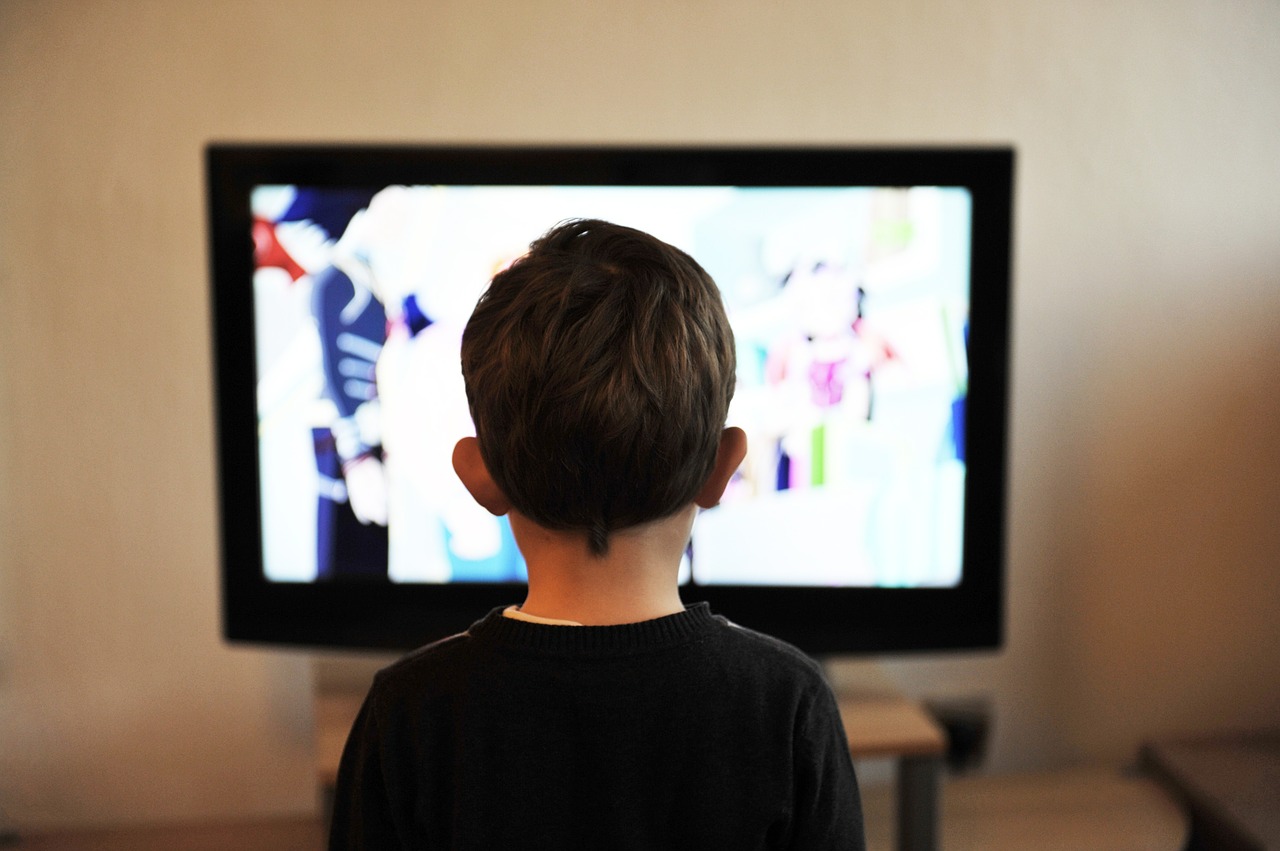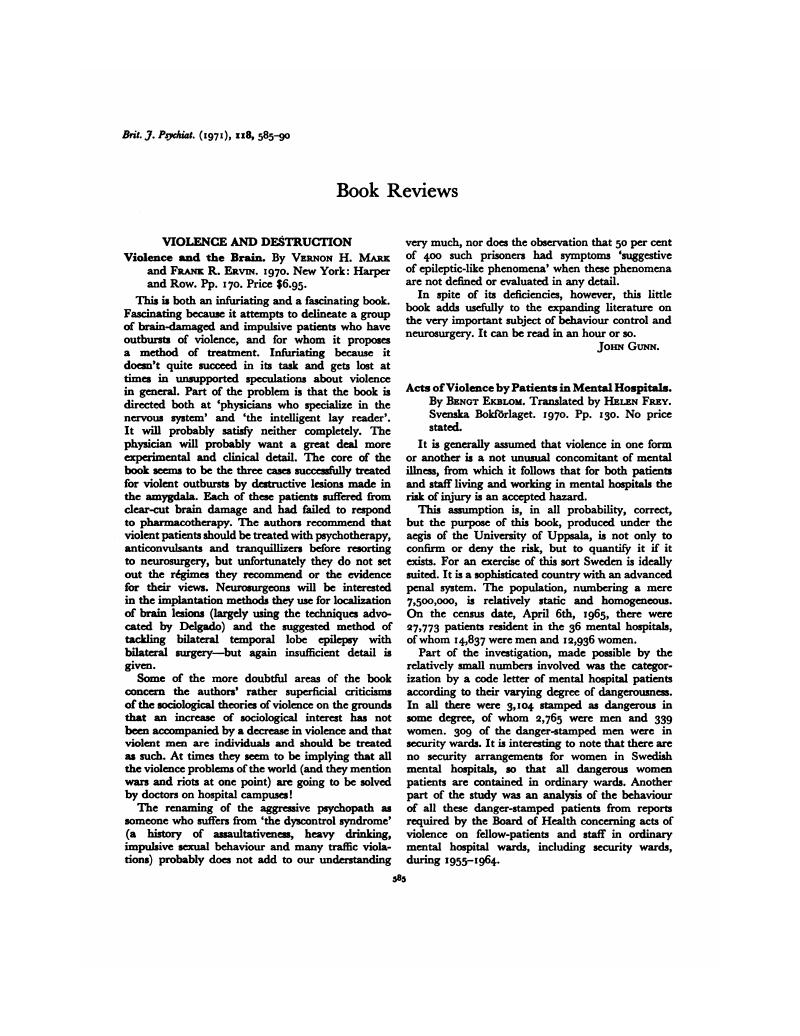Vetter, R. J., Becker, T. A., Williams, J. C., & Kipke, D. R.. (2003). The use of ALGEL/spl reg/ as an artificial dura for chronic cortical implant neuroprosthetics. In First International IEEE EMBS Conference on Neural Engineering, 2003. Conference Proceedings.
(pp. 633–636). IEEE
Plain numerical DOI: 10.1109/CNE.2003.1196908
DOI URL
directSciHub download
Show/hide publication abstract
“© 2003 ieee. surgical techniques are a critical contributor to the level of success achieved with chronically implanted cortical neuroprosthetic devices. many different factors contribute to the amount of irritation the tissue is exposed to from the implanted device. factors include mechanical irritations, infectious pathogens, dural regrowth, etc. in this paper we describe a novel application of the hydrogel polymer, algel® (neural intervention technologies, ann arbor, mi), in conjunction with an implanted michigan probe (cnct, university of michigan). this polymer contains many inherent properties that are beneficial to this type of procedure. properties include: 1) ease of application, 2) biocompatibility, 3) exemplary mechanical properties, and 4) translucent clarity. we believe that algel has been a large contributor to the high level of success achieved with our chronic electrode implantations.”
Silay, K. M., Dehollain, C., & Declercq, M.. (2011). Numerical Thermal Analysis of a Wireless Cortical Implant with Two-Body Packaging. BioNanoScience
Plain numerical DOI: 10.1007/s12668-011-0009-2
DOI URL
directSciHub download
Show/hide publication abstract
“This paper presents an inductive power link for remote powering of a wireless cortical implant. the link includes a class-e power amplifier, a gate driver, an inductive link, and an integrated rectifier. the coils of the inductive link are designed and optimized for remote powering from a distance of 10 mm (scalp thickness). the power amplifier is designed in order to allow closed-loop control of the power delivered to the implant, by controlling the supply voltage. moreover, a gate driver is added to the system to drive the power amplifier and to characterize the gate losses. a new packaging topology is proposed in order to position the implant inside a hole in the cranial bone, without occupying a large area, but still obtaining a short distance between the remote powering coils. the package is fabricated by using biocompatible materials such as pdms and parylene-c. the power efficiency of the remote powering link is characterized for a wide range of load power (1-20 mw) delivered from the rectifier and is measured to be 24.6% at nominal load of 10 mw.”
Björninen, T., Moradi, E., Sydänheimo, L., Carmena, J. M., Rabaey, J. M., & Ukkonen, L.. (2013). Electromagnetic modelling and measurement of antennas for wireless brain-machine interface systems. In 2013 IEEE MTT-S International Microwave Workshop Series on RF and Wireless Technologies for Biomedical and Healthcare Applications, IMWS-BIO 2013 – Proceedings
Plain numerical DOI: 10.1109/IMWS-BIO.2013.6756196
DOI URL
directSciHub download
Show/hide publication abstract
“We analyze the power and voltage transfer in a wireless link from an on-body transmit antenna to 1×1×1 mm3 antenna in a cortical implant to provide power and data telemetry for a battery-free brain-machine interface microelectronic system. we compare the wireless link performance with regular, segmented, and tilted transmit loop antennas. moreover, we analyze the performance improvement achieved by inserting a magneto-dielectric core in the implant antenna. we also attest the simulation model through measurements in a liquid head phantom. © 2013 ieee.”
Kok, C. L., Siek, L., Gao, F., Zheng, Y., & Lim, W. M.. (2012). An ultra-compact green bio-regulator dedicated for brain cortical implant using a dynamic PSR enhancement technique. In Proceedings of the Annual International Conference of the IEEE Engineering in Medicine and Biology Society, EMBS
Plain numerical DOI: 10.1109/EMBC.2012.6346262
DOI URL
directSciHub download
Show/hide publication abstract
“This article presents an ultra-compact green bio-regulator dedicated for brain cortical implant using a dynamic psr enhancement technique. this novel technique enabled the regulator to achieve a very high power supply rejection (psr) of 58db and 78db at 1 mhz and 10mhz respectively. the bioregulator achieves a very low quiescent current of 2μa coupled with an ultra-low power consumption of 1.8μw. this bioregulator, simulated with global foundries 0.18μm cmos process, yields a stable output voltage of 0.5v with a supply voltage ranging from 0.9-1.2v. its distinct features, ultra-low power consumption and high psrr at 1mhz and 10mhz, make it ideally suitable for biomedical brain cortical implant. © 2012 ieee.”
Kosta, P., Paknahad, J., Rodriguez, E. S. G., Loizos, K., Roy, A., Talbot, N., … Lazzi, G.. (2018). Electromagnetic Safety Assessment of a Cortical Implant for Vision Restoration. IEEE Journal of Electromagnetics, RF and Microwaves in Medicine and Biology
Plain numerical DOI: 10.1109/JERM.2018.2812302
DOI URL
directSciHub download
Show/hide publication abstract
“A cortical visual prosthetic system bypasses the components of the visual pathway, which may be damaged due to injury or disease, by directly stimulating the visual cortex; therefore, cortical visual prostheses promise the capability of restoring a form of vision to patients who cannot benefit from other types of visual neural stimulators. a high data rate, multielectrode, implantable device, such as that utilized for a cortical visual prosthesis, requires continuous power provided by an external telemetry unit, which is nonnegligible, given the number of stimulating electrodes and the stimulation rate necessary to avoid flickering visual percepts. this aspect motivates the need to develop models and methods that aid the development of such devices by assessing their compliance with electromagnetic safety standards. in this paper, the electromagnetic safety assessment of a cortical visual prosthetic system is considered, and the solutions employed to numerically treat the computational complexities associated with it are discussed. the specifics of the implementation of an actual visual cortical implant are discussed, and the parameters of such an implant are used as a test case to determine whether ieee and icnirp electromagnetic standards are met in what can be considered a typical embodiment of the prosthesis. results show that, for the considered implant, such a system meets ieee and icnirp safety standards, thus enabling further development of similar neurorehabilitative devices.”
Parthasarathy, K. S., Cheng, Y. C. N., McAllister, J. P., Shen, Y., Li, J., Deren, K., … Auner, G. W.. (2007). Biocompatibilities of sapphire and borosilicate glass as cortical neuroprostheses. Magnetic Resonance Imaging
Plain numerical DOI: 10.1016/j.mri.2007.03.020
DOI URL
directSciHub download
Show/hide publication abstract
“The in vivo biocompatibility of pure sapphire and borosilicate glass (bsg) implanted onto the cerebral cortex was studied via magnetic resonance imaging (mri) and histopathology. each implant was embedded onto the cortical surface of an adult rat brain for a total of 28 days. rats underwent surgery with and without implants, and rats with purposely damaged cortical implant sites were also studied. each animal was imaged via mri before surgery as well as 10 and 28 days after the surgery. histopathological results of animals were obtained on the 28th day to determine the specific effect on neurons. despite the fact that sapphire has been widely used in a variety of medical implants, both mri and histopathological results indicate that pure sapphire is not biocompatible with the cerebral cortex. on the contrary, bsg implants appear to be biocompatible with the cortical surface. © 2007 elsevier inc. all rights reserved.”
Moradi, E., Björninen, T., Sydänheimo, L., Carmena, J. M., Rabaey, J. M., & Ukkonen, L.. (2013). Measurement of wireless link for brain-machine interface systems using human-head equivalent liquid. IEEE Antennas and Wireless Propagation Letters
Plain numerical DOI: 10.1109/LAWP.2013.2283737
DOI URL
directSciHub download
Show/hide publication abstract
“In this letter, we analyze the wireless power transfer from an on-body transmit antenna to a millimeter-size antenna in a cortical implant. the studied wireless link provides power and data telemetry for a battery-free wireless brain-machine interface microelectronic system. we present a cubic 2 × 2 & times; 2 mm3 implant loop and analyze the effect of a magneto-dielectric core material on the performance of the antenna. we compare the wireless link performances to two different transmit antennas: solid and 2-segmented loops. our simulation results show that the 2-segmented loop provides reduced near electric field, but maintains the link power efficiency. finally, we validate the simulated link power efficiencies through measurements in air and in human-head equivalent liquid at 300 mhz. © 2002-2011 ieee.”
Lowery, A. J., Rosenfeld, J. V., Rosa, M. G. P., Brunton, E., Rajan, R., Mann, C., … Pritchard, J.. (2016). Monash Vision Group’s Gennaris Cortical Implant for Vision Restoration. In Artificial Vision
Plain numerical DOI: 10.1007/978-3-319-41876-6_17
DOI URL
directSciHub download
Mark, M., Björninen, T., Ukkonen, L., Sydänheimo, L., & Rabaey, J. M.. (2011). SAR reduction and link optimization for mm-size remotely powered wireless implants using segmented loop antennas. In 2011 IEEE Radio and Wireless Week, RWW 2011 – 2011 IEEE Topical Conference on Biomedical Wireless Technologies, Networks, and Sensing Systems, BioWireleSS 2011
Plain numerical DOI: 10.1109/BIOWIRELESS.2011.5724339
DOI URL
directSciHub download
Show/hide publication abstract
“This paper describes an approach to reduce the average specific absorption rate (sar) of a wireless power link for mm-size cortical implants, while decreasing the loss of the overall link by using a segmented loop transmit antenna. it further shows that, for a given receive antenna size and antenna separation, an optimum transmit antenna size-frequency pair that minimizes the link loss exists. a case study of a wireless link for a mm-size cortical implant optimized for minimum loss shows a reduction of the average sar of more than 30 %, and a link loss improvement of approximately 10 %, leading to a 57 % increase in power available to the implant compared to a conventional loop antenna. © 2011 ieee.”
Lewis, P. M., Ackland, H. M., Lowery, A. J., & Rosenfeld, J. V.. (2015). Restoration of vision in blind individuals using bionic devices: A review with a focus on cortical visual prostheses. Brain Research
Plain numerical DOI: 10.1016/j.brainres.2014.11.020
DOI URL
directSciHub download
Show/hide publication abstract
“The field of neurobionics offers hope to patients with sensory and motor impairment. blindness is a common cause of major sensory loss, with an estimated 39 million people worldwide suffering from total blindness in 2010. potential treatment options include bionic devices employing electrical stimulation of the visual pathways. retinal stimulation can restore limited visual perception to patients with retinitis pigmentosa, however loss of retinal ganglion cells precludes this approach. the optic nerve, lateral geniculate nucleus and visual cortex provide alternative stimulation targets, with several research groups actively pursuing a cortically-based device capable of driving several hundred stimulating electrodes. while great progress has been made since the earliest works of brindley and dobelle in the 1960s and 1970s, significant clinical, surgical, psychophysical, neurophysiological, and engineering challenges remain to be overcome before a commercially-available cortical implant will be realized. selection of candidate implant recipients will require assessment of their general, psychological and mental health, and likely responses to visual cortex stimulation. implant functionality, longevity and safety may be enhanced by careful electrode insertion, optimization of electrical stimulation parameters and modification of immune responses to minimize or prevent the host response to the implanted electrodes. psychophysical assessment will include mapping the positions of potentially several hundred phosphenes, which may require repetition if electrode performance deteriorates over time. therefore, techniques for rapid psychophysical assessment are required, as are methods for objectively assessing the quality of life improvements obtained from the implant. these measures must take into account individual differences in image processing, phosphene distribution and rehabilitation programs that may be required to optimize implant functionality. in this review, we detail these and other challenges facing developers of cortical visual prostheses in addition to briefly outlining the epidemiology of blindness, and the history of cortical electrical stimulation in the context of visual prosthetics.”
Shetliffe, M. A., Kamboh, A. M., Mason, A., & Oweiss, K. G.. (2007). Impact of lossy compression on neural response characteristics extracted from high-density intra-cortical implant data. In Annual International Conference of the IEEE Engineering in Medicine and Biology – Proceedings
Plain numerical DOI: 10.1109/IEMBS.2007.4353552
DOI URL
directSciHub download
Show/hide publication abstract
“In this paper we examine the impact of lossy wavelet compression on the information contained within high-density microelectrode array neural recordings. we have previously reported on the ability of our hardware architecture to perform under the constraints imposed by implantable hardware, as well as on its performance from a compression and signal distortion standpoint. here we extend that work by examining the amount of information that is lost from the recorded data as a result of the finite precision integer arithmetic and thresholding operations inherent in our system. one method commonly used for the classification and sorting of recorded extracellular action potentials is principal component analysis. this technique is used to statistically obtain the most significant attributes of the spikes, thereby allowing for more accurate classification. we use the separability of the resultant clusters as a measure of the information content within the data, and present the results of simulations demonstrating the impact of various hardware design parameters on this separability. © 2007 ieee.”
Schwiebert, L., Gupta, S. K. S., Auner, P. S. G., Abrams, G., Iezzi, R., & McAllister, P.. (2003). A biomedical smart sensor for the visually impaired
Plain numerical DOI: 10.1109/icsens.2002.1037187
DOI URL
directSciHub download
Show/hide publication abstract
“In this paper, we describe the current version of the artificial retina prosthesis and cortical implant that we are developing. this research project will require significant advances in a variety of disciplines. we have assembled a multidisciplinary team of researchers in ophthalmology, neurosurgery, computer networking, vlsi, and sensors to develop the novel solutions needed to make artificial vision for the visually-impaired a reality. this paper describes the novel approach that we have adopted to providing a complete system for restoring vision to visually-impaired persons – from the signals generated by an external camera to an array of sensors that electrically stimulate the retina via a wireless interface.”
Luo, Y., Winstead, C., & Chiang, P.. (2012). 125Mbps ultra-wideband system evaluation for cortical implant devices. In Proceedings of the Annual International Conference of the IEEE Engineering in Medicine and Biology Society, EMBS
Plain numerical DOI: 10.1109/EMBC.2012.6346047
DOI URL
directSciHub download
Show/hide publication abstract
“This paper evaluates the performance of a 125mbps impulse ratio ultra-wideband (ir-uwb) system for cortical implant devices by using low-q inductive coil link operating in the near-field domain. we examine design tradeoffs between transmitted signal amplitude, reliability, noise and clock jitter. the ir-uwb system is modeled using measured parameters from a reported uwb transceiver implemented in 90nm-cmos technology. non-optimized inductive coupling coils with low-q value for near-field data transmission are modeled in order to build a full channel from the transmitter (tx) to the receiver (rx). on-off keying (ook) modulation is used together with a low-complexity convolutional error correcting code. the simulation results show that even though the low-q coils decrease the amplitude of the received pulses, the uwb system can still achieve acceptable performance when error correction is used. these results predict that uwb is a good candidate for delivering high data rates in cortical implant devices.”
De Ridder, D., & Vanneste, S.. (2014). Targeting the parahippocampal area by auditory cortex stimulation in tinnitus. Brain Stimulation
Plain numerical DOI: 10.1016/j.brs.2014.04.004
DOI URL
directSciHub download
Show/hide publication abstract
“Background: the final common pathway in tinnitus generation is considered to be synchronized auditory oscillatory hyperactivity. intracranial auditory cortex stimulation (iacs) via implanted electrodes has been developed to treat severe cases of intractable tinnitus targeting this final common pathway, in the hope of being a panacea for tinnitus. however, not everybody responds to this treatment. objective: the electrical brain activity and functional connectivity at rest might determine who is going to respond or not to iacs and might shed light on the pathophysiology of auditory phantom sound generation. method: the resting state electrical brain activity of 5 patients who responded and 5 patients who did not respond to auditory cortex implantation are compared using source localized spectral activity (z-score of log transformed current density) and lagged phase synchronization. results: sloreta source localization reveals significant differences between responders vs nonresponders for beta3 in left posterior parahippocampal, hippocampal and amygdala area extending into left insula. gamma band differences exist in the posterior parahippocampal areas and ba10. functional connectivity between the auditory cortex and the hippocampal area is increased for beta2, delta and theta2 in responders, as well as between the parahippocampal area and auditory cortex for beta3. conclusion: the resting state functional connectivity and activity between the auditory cortex and parahippocampus might determine whether a tinnitus patient will respond to a cortical implant. the auditory cortex may only be a functional entrance into a larger parahippocampal based tinnitus network.”
Khan, M. W. A., Bjorninen, T., Sydanheimo, L., & Ukkonen, L.. (2016). Characterization of Two-Turns External Loop Antenna With Magnetic Core for Efficient Wireless Powering of Cortical Implants. IEEE Antennas and Wireless Propagation Letters
, 15, 1410–1413.
Plain numerical DOI: 10.1109/LAWP.2015.2511187
DOI URL
directSciHub download
Show/hide publication abstract
“© 2015 ieee.we present a two-turns loop antenna with a magnetic core to transfer power wirelessly to a miniature 2 × 2 × 2-mm3 cubic loop antenna in a cortical implant. compared to a same-sized single-turn loop antenna, it achieves reduction in the specific absorption rate (sar) and transmits 20 mw (11%) more power to the implant by maintaining the same link power efficiency. we also investigate the optimum distance of the external antenna from the body in terms of the link power efficiency and sar. moreover, we present a new method of estimating the worst-case voltage amplitude incident at the front end of the implanted microsystem under different impedance matching conditions. we have fabricated the simple and two-turns loop antennas and attested the link power efficiency of both in a liquid phantom mimicking the dielectric properties of the human skin at 100 mhz.”
Yan, X., Zhang, X., Chi, W., Ai, H., & Wu, L.. (2015). Comparing the influence of crestal cortical bone and sinus floor cortical bone in posterior maxilla bi-cortical dental implantation: A three-dimensional finite element analysis. Acta Odontologica Scandinavica
Plain numerical DOI: 10.3109/00016357.2014.967718
DOI URL
directSciHub download
Show/hide publication abstract
“OBJECTIVE: this study aimed to compare the influence of alveolar ridge cortical bone and sinus floor cortical bone in sinus areabi-cortical dental implantation by means of 3d finite element analysis.nmaterials and methods: three-dimensional finite element (fe) models in a posterior maxillary region with sinus membrane and the same height of alveolar ridge of 10 mm were generated according to the anatomical data of the sinus area. they were either with fixed thickness of crestal cortical bone and variable thickness of sinus floor cortical bone or vice versa. ten models were assumed to be under immediate loading or conventional loading. the standard implant model based on the nobel biocare implant system was created via computer-aided design software. all materials were assumed to be isotropic and linearly elastic. an inclined force of 129 n was applied.nresults: von mises stress mainly concentrated on the surface of crestal cortical bone around the implant neck. for all the models, both the axial and buccolingual resonance frequencies of conventional loading were higher than those of immediate loading; however, the difference is less than 5%.nconclusion: the results showed that bi-cortical implant in sinus area increased the stability of the implant, especially for immediately loading implantation. the thickness of both crestal cortical bone and sinus floor cortical bone influenced implant micromotion and stress distribution; however, crestal cortical bone may be more important than sinus floor cortical bone.”
Hoenecke, H. R., Tibor, L. M., Elias, D. W., Flores-Hernandez, C., Steinvurzel, J. N., & D’Lima, D. D.. (2012). A quantitative three-dimensional templating method for shoulder arthroplasty: Biomechanical validation in cadavers. Journal of Shoulder and Elbow Surgery
Plain numerical DOI: 10.1016/j.jse.2011.10.011
DOI URL
directSciHub download
Show/hide publication abstract
“Background: press-fit humeral components for total shoulder arthroplasty have notable potential complications that may be minimized by preoperative templating and improvements in stem design. the purpose of this study was to develop a 3-dimensional templating technique for the humeral stem and to validate this templating in cadaveric specimens. materials and methods: a cylindrical stem and a stem with a rectangular cross-section were selected for templating and force measurements. templating was carried out for 15 clinical patients and 16 cadaveric shoulders, including calculation of the cortical-implant volume ratio (civr). insertion forces for stem broaching and impaction were measured for 15 patients and 8 paired cadaveric shoulders. hoop strain and periprosthetic fractures were monitored in cadaveric shoulders with strain gauges. results: a significant difference in the civr was noted between rectangular and cylindrical stems. no difference was observed in impact forces for ideally sized rectangular or cylindrical stems. a difference in insertion forces was found between oversized cylindrical and oversized rectangular implant stems and also between ideal and oversized cylindrical implant stems. the difference in maximal hoop strain between ideally sized rectangular and cylindrical stems was also statistically significant. conclusions: civr is useful to predict an ideal humeral stem size. cylindrical stems have a different design rationale for fixation than rectangular stems. surgeon awareness of the fixation rationale for a particular stem design is important because different stem types have different effects on the insertion force. more anatomic humeral stem designs may help to minimize the risk of complications and optimize stem fixation. © 2012 journal of shoulder and elbow surgery board of trustees.”
Ferguson, S., & Ferguson, S. D.. (1986). High resolution vision prosthesis systems: Research after 15 years. Journal of Visual Impairment and Blindness
Show/hide publication abstract
“Presents new design criteria and suggests alternative theoretical approaches to high resolution vision prosthesis systems, using r. m. fish’s (see pa, vol 55:5179) work as a point of departure. tactile substitution systems are proposed in preference to cortical implant work, and electrocutaneous transfer is offered in preference to vibrotactile techniques, which are seen as the major reason for the limited resolution achieved by existing approaches. (24 ref) (psyclit database copyright 1987 american psychological assn, all rights reserved)”
Khan, M. W. A., Bjorninen, T., Sydanheimo, L., & Ukkonen, L.. (2015). Two-turns antenna and magnetic materials for effective powering of mm-size implant in wireless brain-machine interface system. In 2015 IEEE MTT-S International Microwave Workshop Series on RF and Wireless Technologies for Biomedical and Healthcare Applications, IMWS-BIO 2015 – Proceedings
Plain numerical DOI: 10.1109/IMWS-BIO.2015.7303798
DOI URL
directSciHub download
Show/hide publication abstract
“© 2015 ieee.we analyze a two-turns antenna to provide power wirelessly to 2×2×2 mm3 cubic cortical implant. we present simulation of available power and voltage to the implant and assess the impact of a inserting a magnetic core in the antennas for further performance enhancement. we have fabricated the studied antennas and verified the simulated link power efficiency through measurement in a liquid phantom.”
Morillas, C. A., Romero, S. F., Martinez, A., Pelayo, F. J., & Fernández, E.. (2005). A Computational Tool to Test Neuromorphic Encoding Schemes for Visual Neuroprostheses
Plain numerical DOI: 10.1007/11494669_63
DOI URL
directSciHub download
Show/hide publication abstract
“Recent advances in arrays of microelectrodes open the door to both better understanding of the way the brain works and to the restoration of damaged perceptive and motor functions. in the case of sensorial inputs, direct multi-channel interfacing with the brain for neuro-stimulation requires a computational layer capable of handling the translation from external stimuli into appropriate trains of spikes. the work here presented aims to provide automated and reconfigurable transformation of visual inputs into addresses of microelectrodes in a cortical implant for the blind. the development of neuroprostheses such as this one will contribute to reveal the neural language of the brain for the representation of perceptions, and offers a hope to persons with deep visual impairments. our system serves as a highly flexible test-bench for almost any kind of retina model, and allows the validation of these models against multi-electrode recordings from experiments with biological retinas. the current version is a pc-based platform, and a compact stand-alone device is under development for the autonomy and portability required in chronic implants. this tool is useful for psychologists, neurophysiologists, and neural engineers as it offers a way to deal with the complexity of multi-channel electrical interfaces for the brain.”











